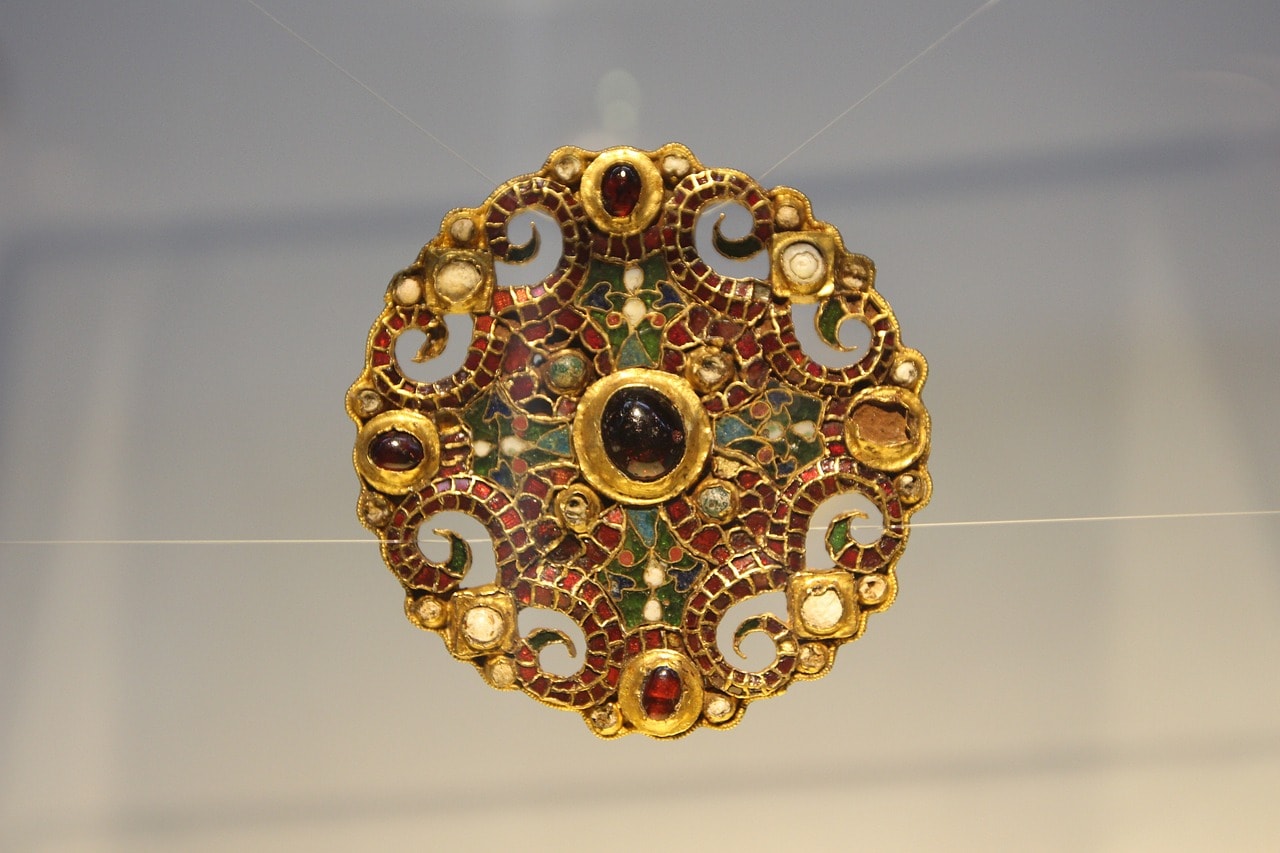
Table of Contents
The fibula, a historical piece of jewelry, has evolved over time from its ancient beginnings. First used as a brooch or pin in Roman and Greek times, the fibula has an interesting story of changing design and function.
Let’s explore how the fibula went from being a practical tool for fastening clothes to a stylish and meaningful accessory in today’s jewelry.
What is a Fibula?
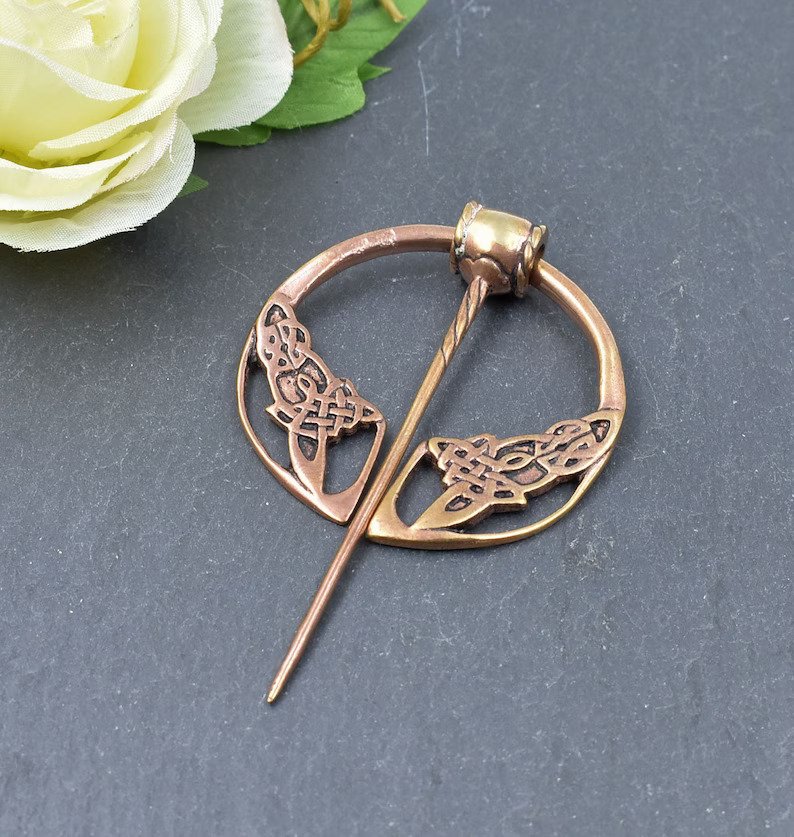
A fibula in jewelry is a decorative brooch or pin that was initially used to fasten clothes. It first appeared in ancient Greek and Roman cultures, not just as a practical tool but also as a sign of status and style. A fibula typically has a pin, a body, and a catch, and its design varies with different periods and cultures, often featuring detailed artwork, gemstones, and metals.
Over the years, fibulas have become more intricate. Today, they’re no longer common for fastening garments but continue to fascinate in historical studies and inspire modern jewelry designs, valued for their combination of function and decorative appeal.
Origin and History of the Fibula
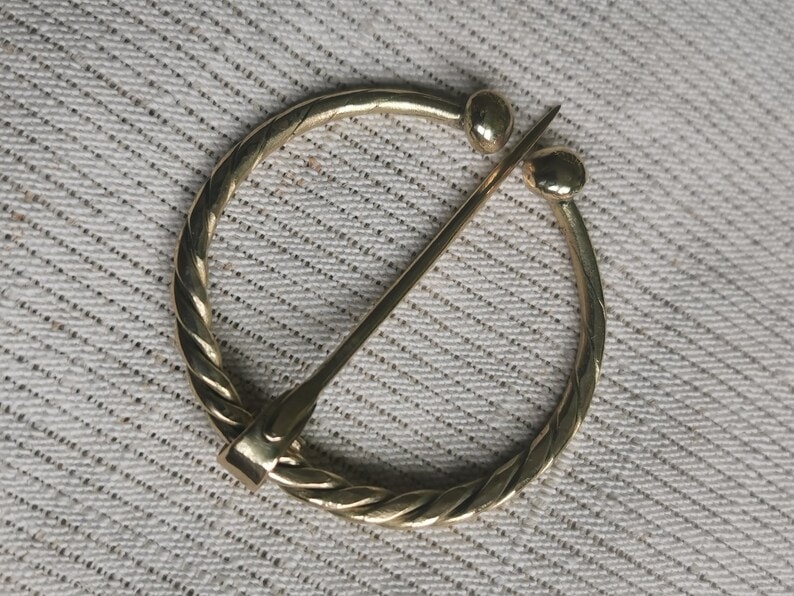
The fibula, a key piece in jewelry history, first appeared in the early Iron Age, around the 8th century BC. Ancient Greek and Roman civilizations initially used it mainly to fasten garments, much like today’s safety pins. The design of the earliest fibulas was simple, but as they spread to different cultures like the Etruscans and Celts, their designs became more intricate.
Beyond being practical, fibulas also showed social status and wealth. Rich and noble people often wore fibulas made of precious metals and decorated with detailed designs and gemstones. The styles of fibulas varied greatly, from simple bow shapes to more complex designs like disc fibulas and zoomorphic fibulas with animal shapes.
With the fall of the Roman Empire and changes in clothing styles, the use of fibulas declined. However, they continued to influence the design of brooches and pins in later centuries. Today, fibulas are important historical and archaeological finds, providing insights into ancient fashion, art, and society.
Symbolism and Meaning of the Fibula
The fibula, a brooch used in ancient times, was more than just a tool for holding clothes together. It often represented the wearer’s social status and wealth, especially if made from expensive metals and gems.
The fibula also served as a symbol of identity and cultural connection, with its design and materials reflecting the wearer’s community and societal role. In cultures like the Greeks and Romans, people believed the fibula could protect them from harm and bring good luck.
The detailed designs and patterns on the fibula sometimes showed religious beliefs, group memberships, or personal achievements. So, the fibula was not just an ornament but a meaningful symbol that communicated personal, social, and cultural values.
What are the Parts of the Fibula?
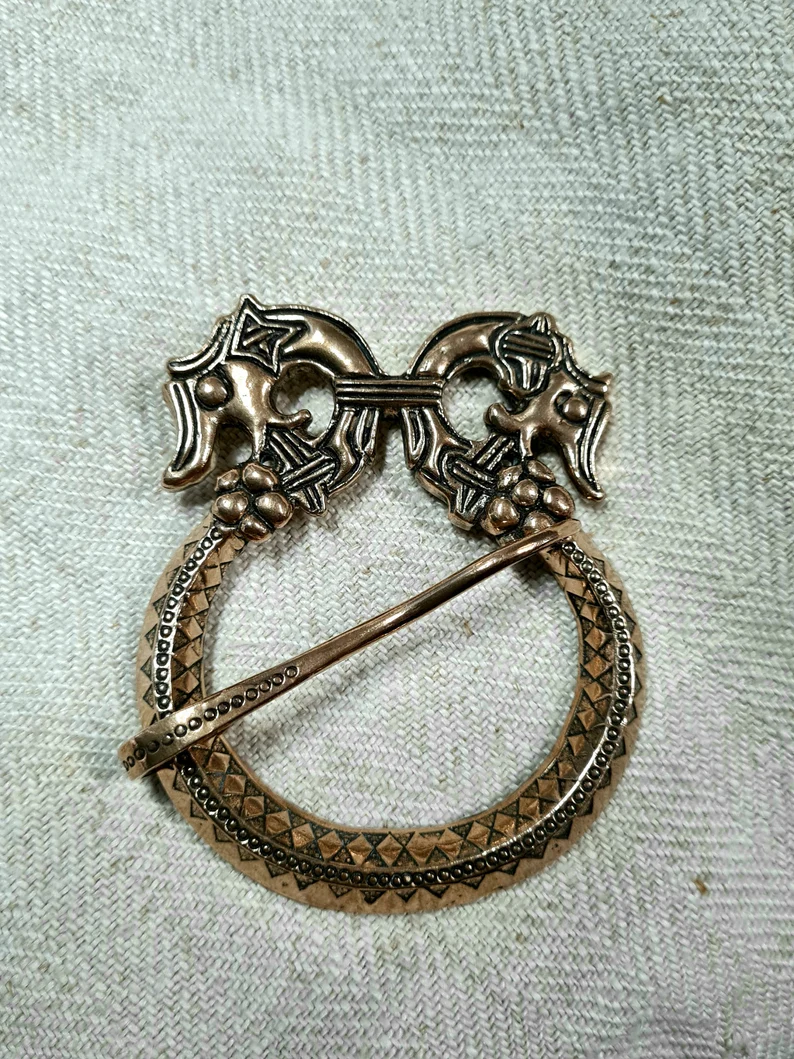
While fibula came in a large variety of designs, they all tend to have the same features. These include:
1. The Body
Depending on the type and form of the fibulae, the body could either be a bow or a plate. The former is long, narrow, and arched, while the latter is wide and flat. The body was often characterized by decorations.
The side where the pin closes is known as the foot while the side with the spring and hinge is the head and can be worn facing up, down, or sideways depending on the culture in question.
2. The Pin
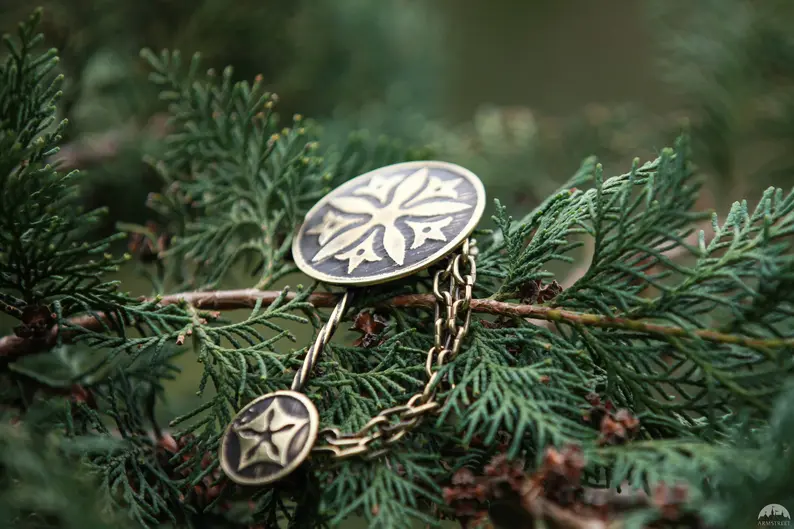
This could either be a continuation of the body or a separately attached piece. When the pin is connected to the pin rest or the catch plate, the fibula is held in place.
3. The Spring
This was a part of earlier designs of the fibula and was where the body met the pin. There are two types of fibula springs; unilateral springs and bilateral springs.
Appearing in the 14th Century BC., unilateral springs were the earliest types and were characterized by a one-direction swing.
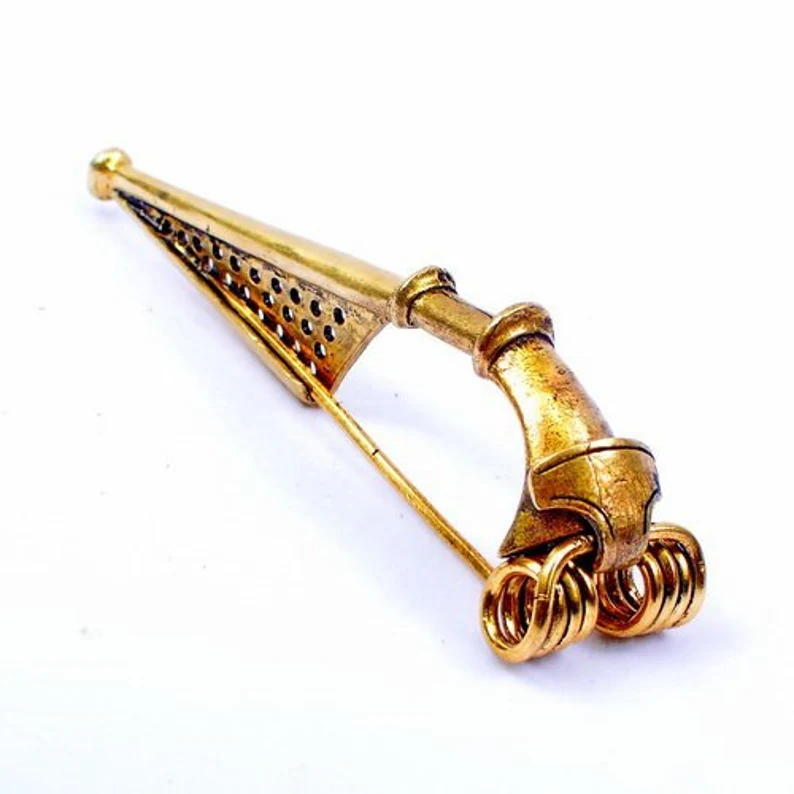
Bilateral springs on the other hand had multiple loops going over the pin and across or under the body. They came into being in the 6th Century BC and remained the consistent design.
Around the 1st Century AD, some fibula designs replaced the spring with a hinge, giving birth to the famous crossbow hinge, but the hinge design later died out leaving the use of spring as the dominant design.
Why and How to Wear a Fibula?
While the name fibula might sound fancy and foreign, we’re referring to what’s essentially a brooch. If you’re interested in wearing fibula inspired by ancient designs, you can always wear it like you would a brooch.
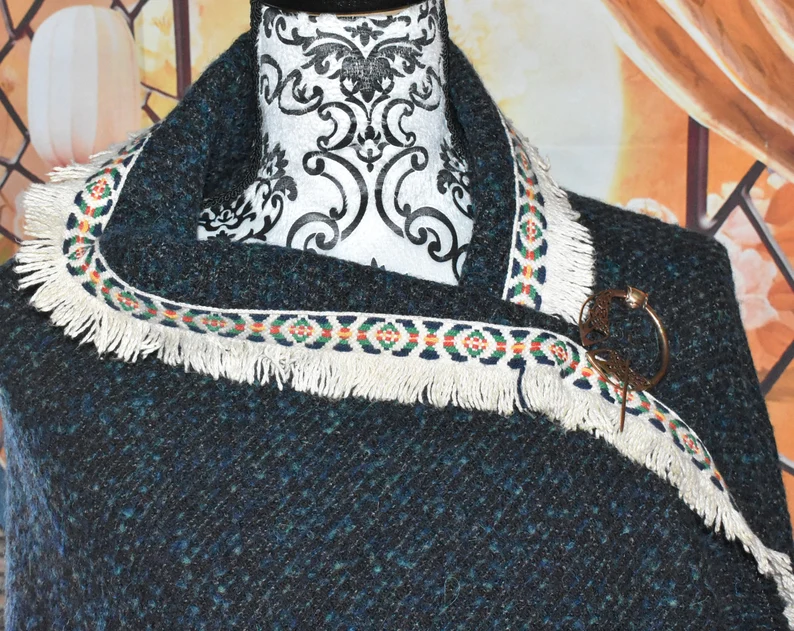
It’s unlikely that you would need to wear a fibula to keep your robes in place, so while you might only be thinking of the decorative elements, a fibula is also perfect for holding items like scarves in position.
When choosing a design, you might want to pick a fibula that has ties to your heritage. For example, if you’re Irish, Celtic fibula might be more meaningful for you.
Types of Fibula for Jewelry
There is a vast variety of fibula based on their historical period, the material used, the geographical area they were discovered in, and the culture and function associated with them.
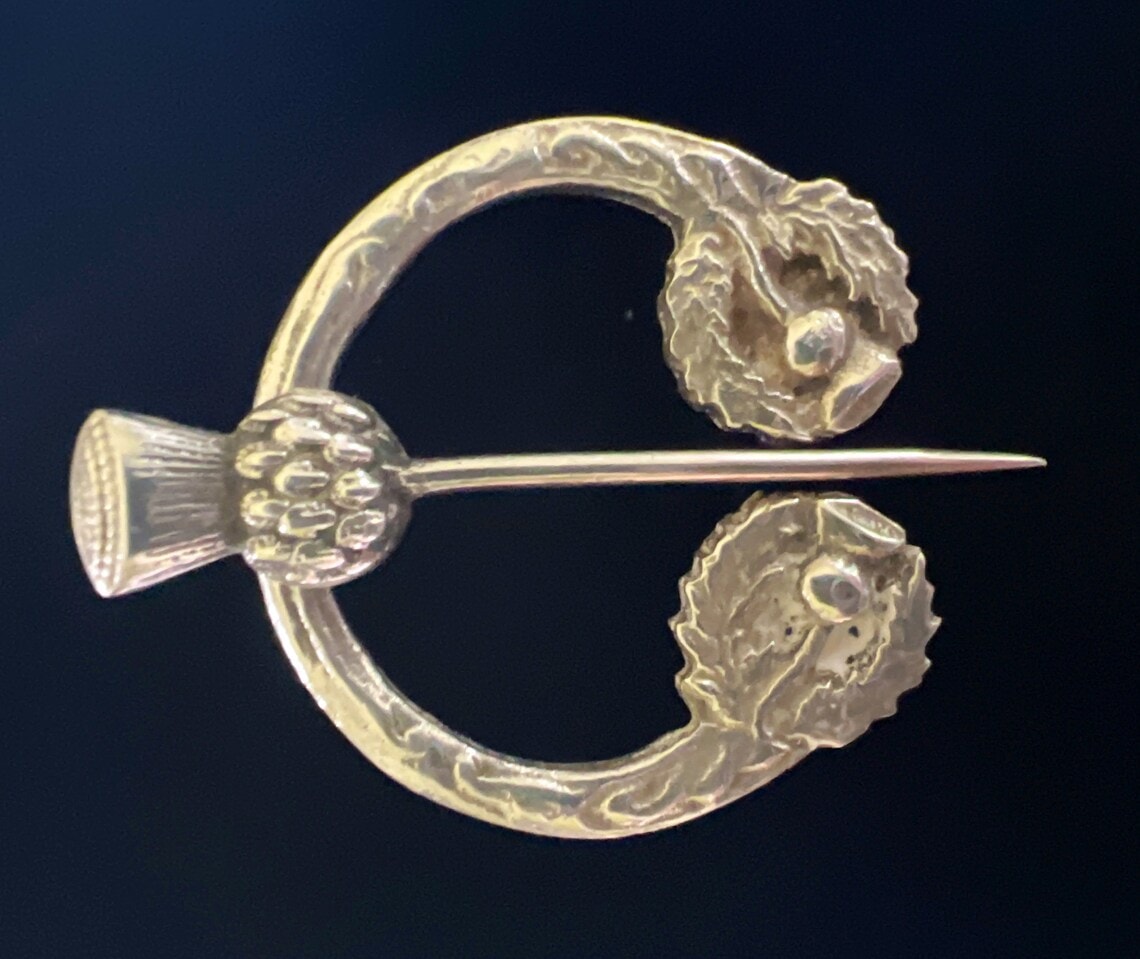
Some cultures designed different fibula with status and profession in mind. For example, men had different designs from women, as did married women from single women. There were also specific designs for warriors, chiefs, high-ranking officials, and so on.
1. Bow Fibula
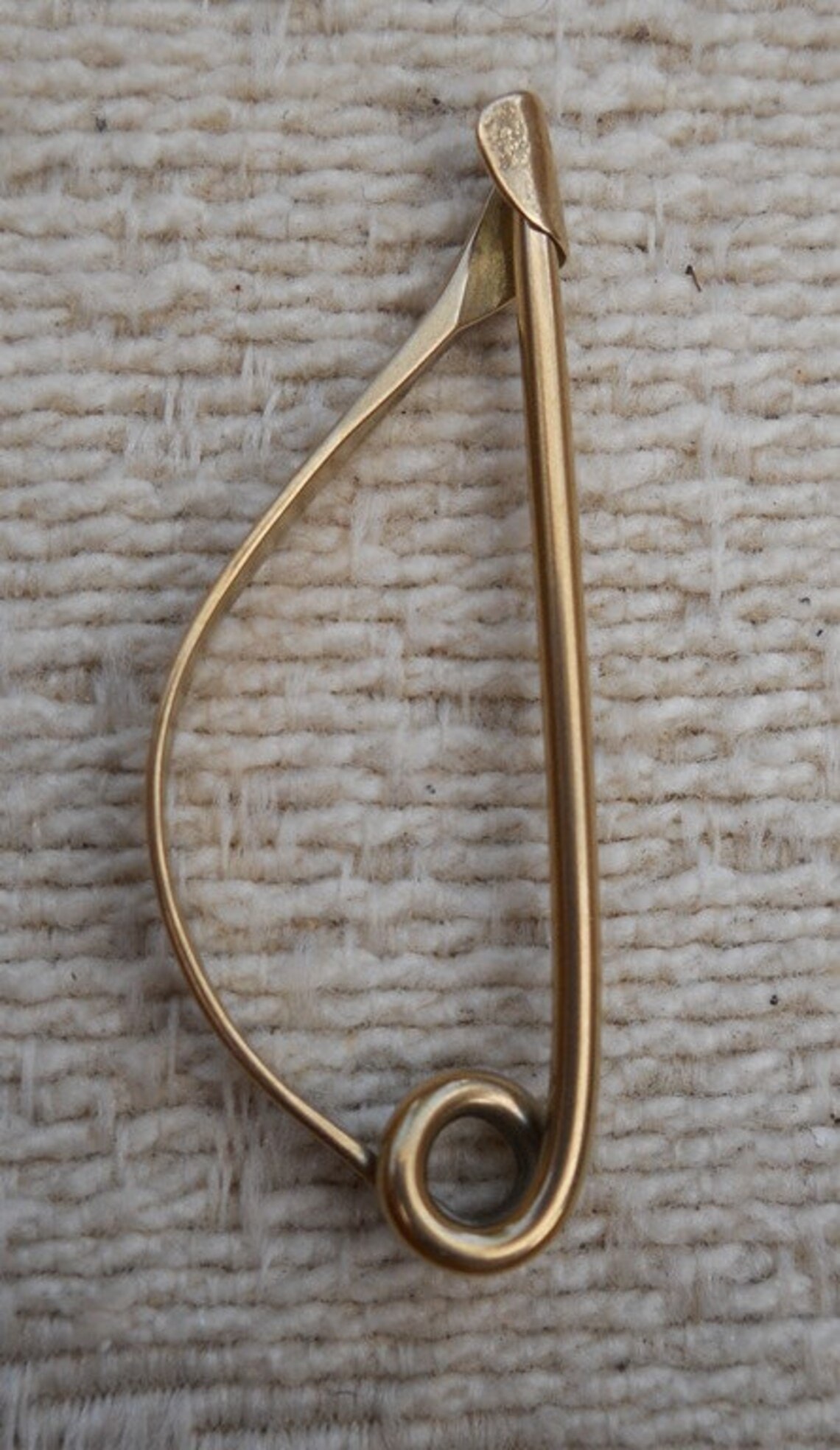
The bow fibulae is the oldest design consisting of a body, pin, and a catch plate. These were more often than not decorated with incised geometric designs.
Over time, the bow fibula underwent variations of designs creating families of styles. For example, between the 7th and 5th centuries BC., the foot of the fibula lengthened compared to the original design, whereby it stopped at the end of the arch.
This development gave rise to Kahn and Pauken types of fibula.
Other variations included the fattening of the bow, enlarging of the catch plate, and the use of bilateral springs rather than unilateral ones.
2. La Tène Fibula
This type dates back to the 1st Century BC and is characterized by the attachment of the foot of the body by casting, rather than wrapping it around the bow.
The La Tene Fibula also underwent several modifications creating the Nauheim type where the bow widened into a diamond shape, and the Schussel type whereby the bow, ribbon in shape, widened and rounded into an arrow-shaped head that covered the spring.
It’s important to note that it’s the variations of the La Tene that eventually gave rise to zoomorphic patterns, also known as animal designs. With this technique, artists made fibula resembling horses, birds, and other commonly known animals.
3. The Fantail Fibula
Traced to the 2nd century AD, the Fantail fibula was introduced to the Romans by the Germans who served as their auxiliaries. It was characterized by a short bow attached to a flat and wide foot.
The most common variation of Fantail fibula was the Augen, also known as the eye fibula. These were a longer version and had their flat foot decorated with two ringed dots resembling eyes.
4. Byzantine Fibula
A variation of the crossbow fibula, the Byzantine was made of gold and was decorated with a cross and floral scrolls that seemed to spring from acanthus leaves. This design was symbolic of salvation and paradise. Additionally, the incised cross symbolized the triumph of life over death.
5. Ring Fibula and Penannular Brooches
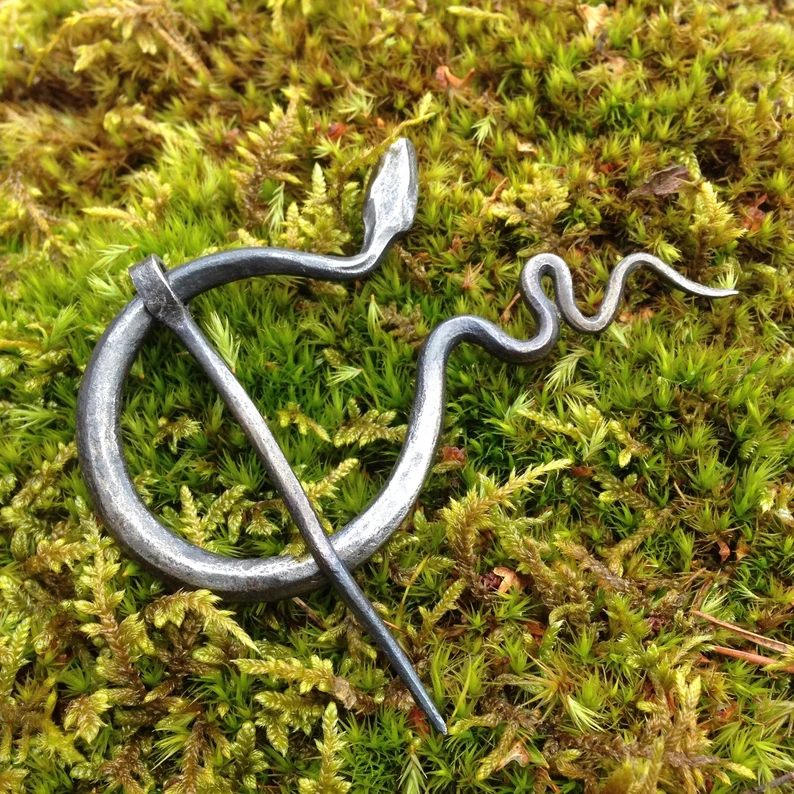
The ring fibula featured for a long time from the 2nd to 14th century AD. These can be very hard to place but the decorations on them differentiate them from either the Roman era or the medieval time.
Penannular brooches, a variation of the ring fibula which composed of an incomplete ring and two ends. These were worn as a mark of status in the post-Roman period.
6. Lombardic Fibula
This design is traced to Slovenia formerly known as Kranj and is a more stylized version of the crossbow fibula. It has on one end a semi-circle from which emanate rectangular forms with spheres on top.
Lombards are coated with gold and adorned with a black metal called niello. They were worn as a statement of power.
7. Frankish fibulae
This design was of barbaric art and was partitioned and decorated with semi-precious stones. The top end carried shapes of eagle heads (a symbol of the Roman empire), and the main body was decorated with shapes of fish.
For the eagles, garnets were used as eyes while other stones were used to decorate the rest of the fibula.
8. Visigothic Fibula

Also a form of barbaric art, the Visigothic fibula were made in the form of eagles. These pieces were decorated with colored glass and gems like amethyst and garnets. They gain their name from the place they were discovered, and that is the Visigothic grave.
9. Tizerais Fibula
These triangular-shaped fibulae are arguably the most popular jewelry from the Berber community of North Africa. They are reportedly big and heavy. One of the variations of the Tizerais found in Kabylie, Algeria is heavily decorated with a blend of yellow, green, and blue enamel.
Fibula in the Contemporary World
Even though the safety pin is the most commonly used item to fasten clothes in today’s world, they are merely functional and hardly decorative.
The fibula, however, comes in different sizes, designs, and colors. They’re available in the market and serve as great accessories to garments for both men and women.
Wrapping Up
The fibula, more than a piece of ancient jewelry, shows how art and symbolism last in human culture. It has evolved from a simple clothing fastener to a valued historical object, highlighting its importance in different societies. Today, the fibula still fascinates both enthusiasts and historians, showcasing the deep link between fashion, social status, and identity throughout history.









